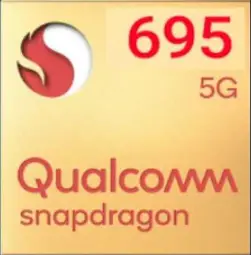Qualcomm Snapdragon 695 vs Apple A14 Bionic
We’ve meticulously compared the recently released
Snapdragon 695 vs A14 Bionic
SoCs, developed by
Qualcomm and Apple respectively. This
comparison focuses on the pros and cons of their
8-core and 6-core CPUs,
backed by performance metrics
from Geekbench, Antutu, and
3DMark benchmarks, and technical
specifications.
Review
General comparison of performance, power consumption,
and other
indicators
CPU Performance
Evaluation of Single-Core and
Multi-Core Processor Performance
Gaming Performance
Gaming and OpenCL/Vulkan
Performance of the Graphics Processing Unit (GPU)
Battery life
Energy Efficiency in Battery Usage
Tech Insist Score
Overall Performance Rating of the
Chip
Key Differences
Main differences and advantages of each chip
Pros of A14 Bionic
Benchmarks
Evaluating performance through competitive testing in
leading benchmarks.
AnTuTu 10
The AnTuTu Benchmark evaluates CPU, GPU, RAM, and I/O
capabilities across various scenarios.
CPU
115765
203493
GPU
93638
284242
Memory
60715
131989
UX
101282
131211
Total score
371400
750935
GeekBench 6
The GeekBench test shows raw single-threaded and
multithreaded CPU
performance
3DMark
A cross-platform benchmark that assesses graphics
performance in Vulkan
(Metal)
3DMark Wild Life Performance
Stability
99%
77%
Graphics test
7 FPS
50 FPS
Score
1204
8375
Specifications
Full list of technical specifications of Snapdragon 695 and Dimensity
9300
Architecture
2x 2.2 GHz – Kryo 660 Gold (Cortex-A77)
2x 3.1 GHz – Firestorm
Cores
8
6
Base Frequency
1700MHz
1800MHz
Turbo Frequency
2200MHz
3100MHz
Instruction set
ARMv8.2-A
ARMv8.5-A
L2 cache
-
128 KB
L2 cache
-
8 MB
L3 cache
-
-
Process
6 nanometers
5 nanometers
Transistor count
-
11.8 billion
TDP (Sustained Power Limit)
6 W
6 W
GPU name
Adreno 619
Apple A14 GPU
Architecture
Adreno 600
-
GPU frequency
840 MHz
-
Pipelines
-
4
Shading units
128
-
Total shaders
256
-
FLOPS
536 Gigaflops
998 Gigaflops
Vulkan version
1.1
-
OpenCL version
2.0
-
DirectX version
12
-
Neural processor (NPU)
Hexagon 686
Neural Engine
Memory type
LPDDR4X
LPDDR4X
Memory frequency
2133 MHz
2133 MHz
Bus
-
-
Max bandwidth
17 Gbit/s
34.1 Gbit/s
Max size
8 GB
6 GB
Storage type
eMMC 5.1, UFS 2.2
NVMe
Max display resolution
2520 x 1080
2732 x 2048
Max camera resolution
1x 108MP, 2x 16MP
-
Video capture
1K at 60FPS
4K at 60FPS
Video playback
1080p at 60FPS
4K at 60FPS
Video codecs
H.264, H.265, VP8, VP9
H.264, H.265, Motion JPEG
Audio codecs
AAC, AIFF, CAF, MP3, MP4, WAV
AAC, AIFF, CAF, MP3, MP4, WAV, AC-3, E-AC-3, AAX, AAX+
Modem
Snapdragon X51
-
4G support
LTE Cat. 18
LTE Cat. 18
5G support
Yes
Yes
Download speed 5G
Up to 2500 Mbps
Up to 7500 Mbps
Download speed 4G
Up to 800 Mbps
-
Upload speed 5G
Up to 1500 Mbps
Up to 2500 Mbps
Upload speed 4G
Up to 210 Mbps
-
Wi-Fi
6
6
Bluetooth
5.2
5.0
Navigation
GPS, GLONASS, Beidou, Galileo, QZSS, SBAS, NAVIC
GPS, GLONASS, Beidou, Galileo

